Napoleon III style wall mirror with repoussé work in burnished brass, mid-19th century
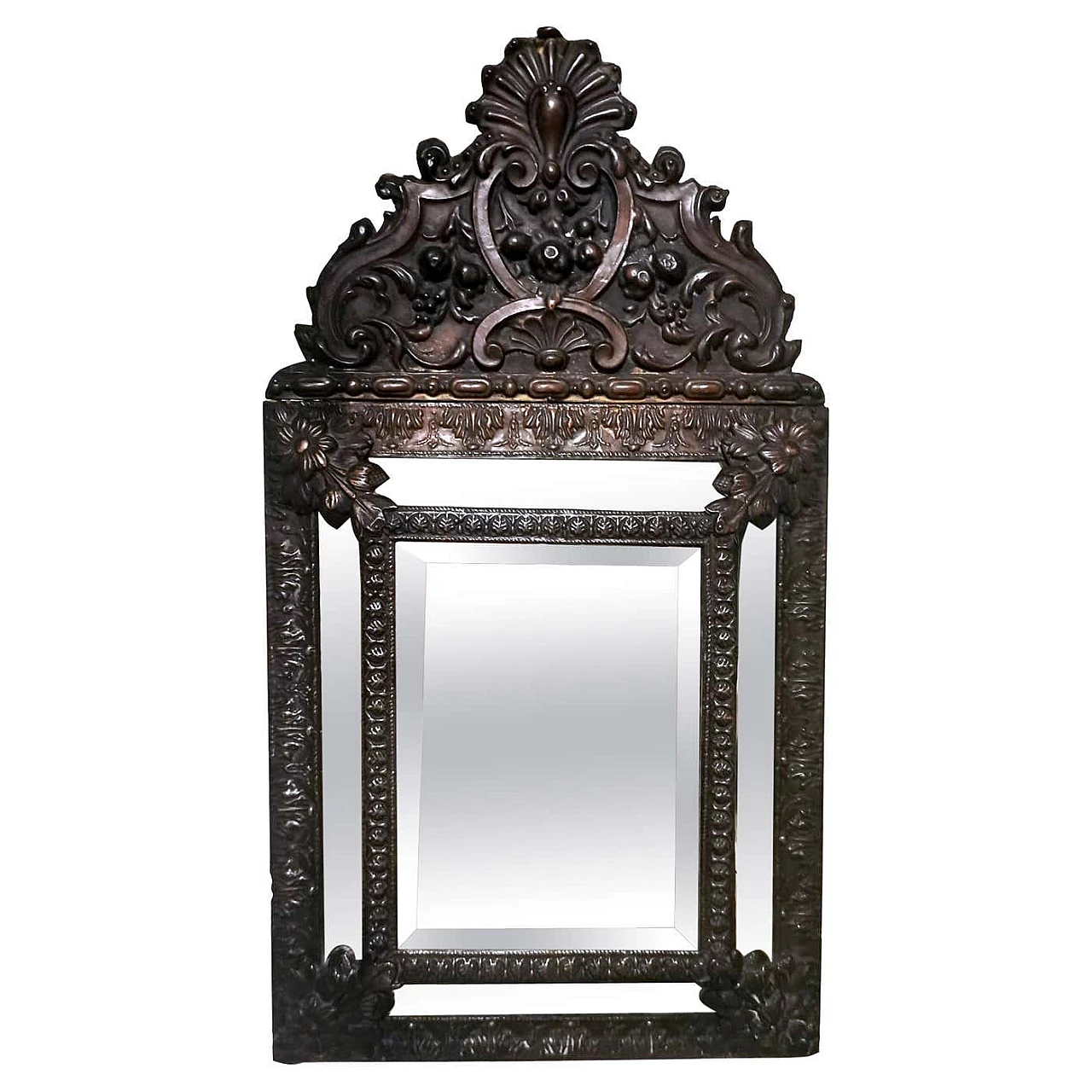
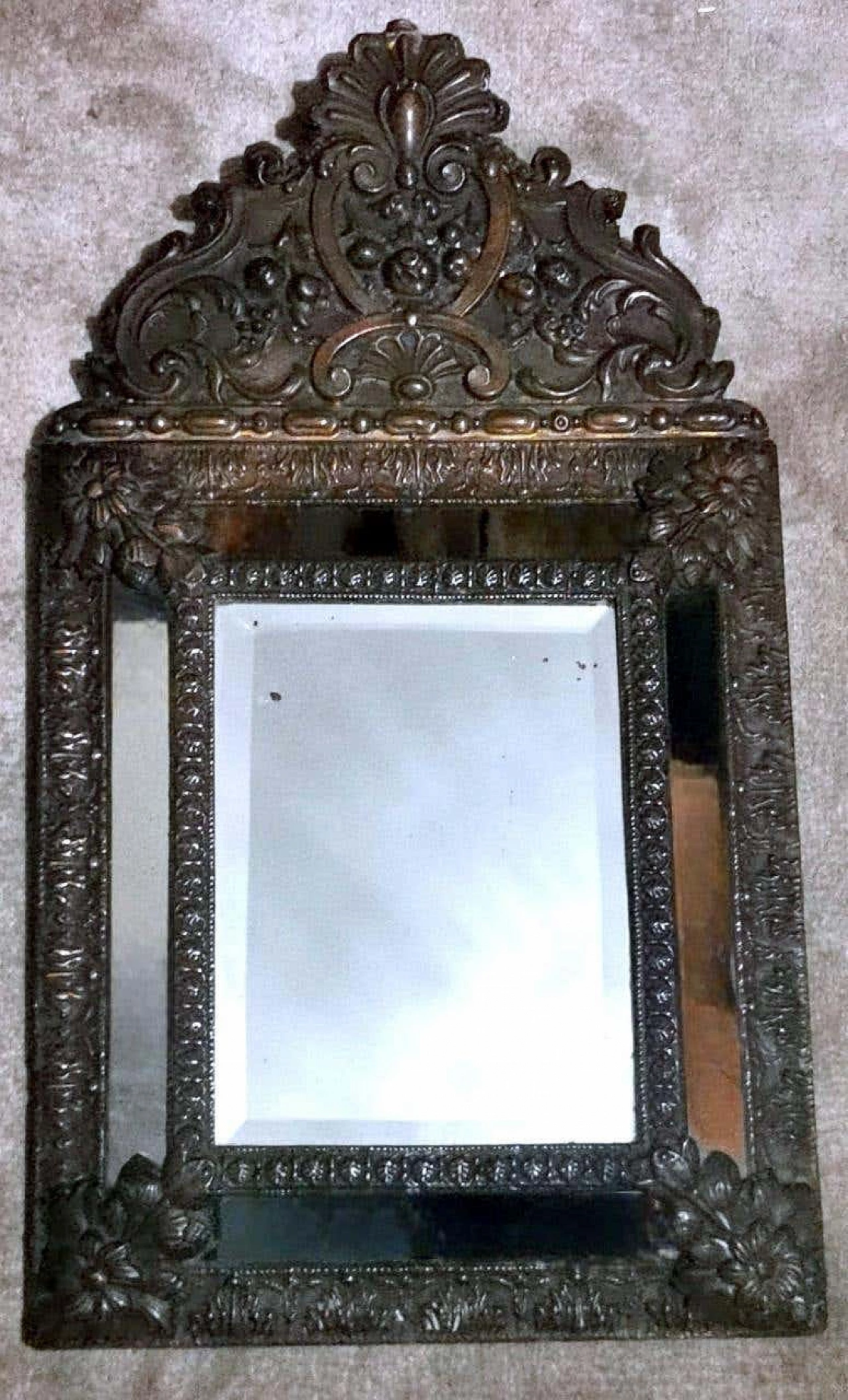
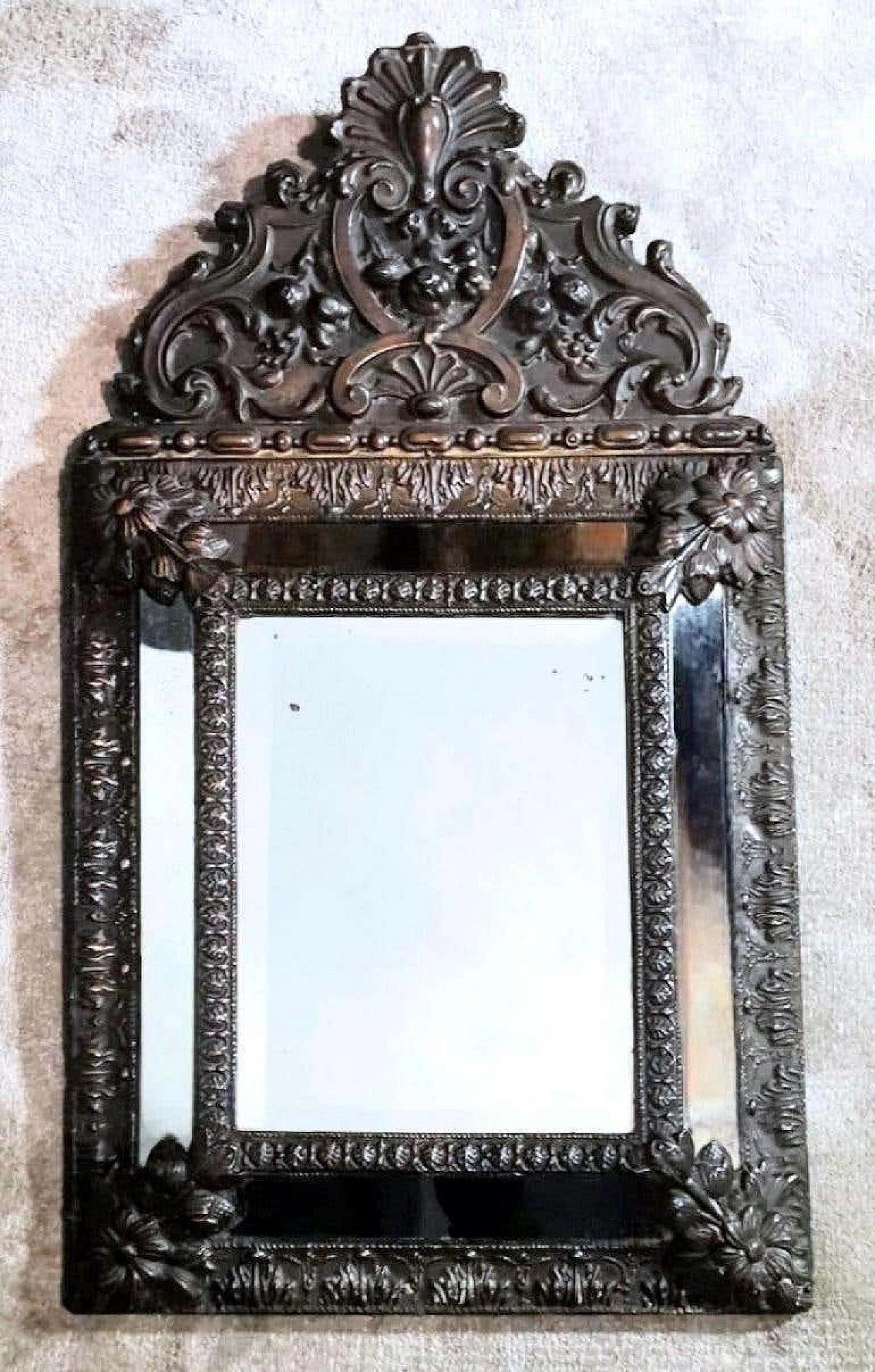
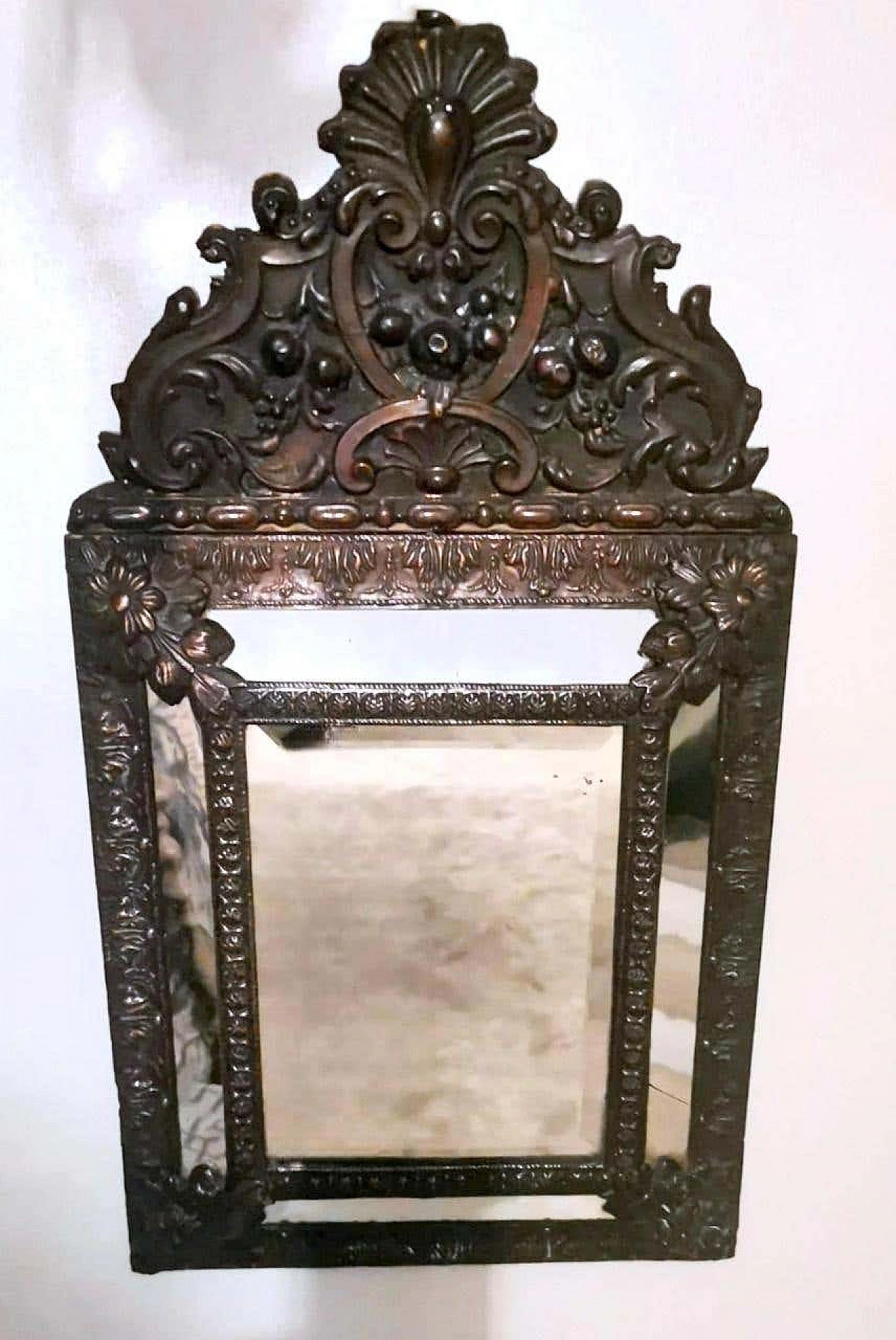
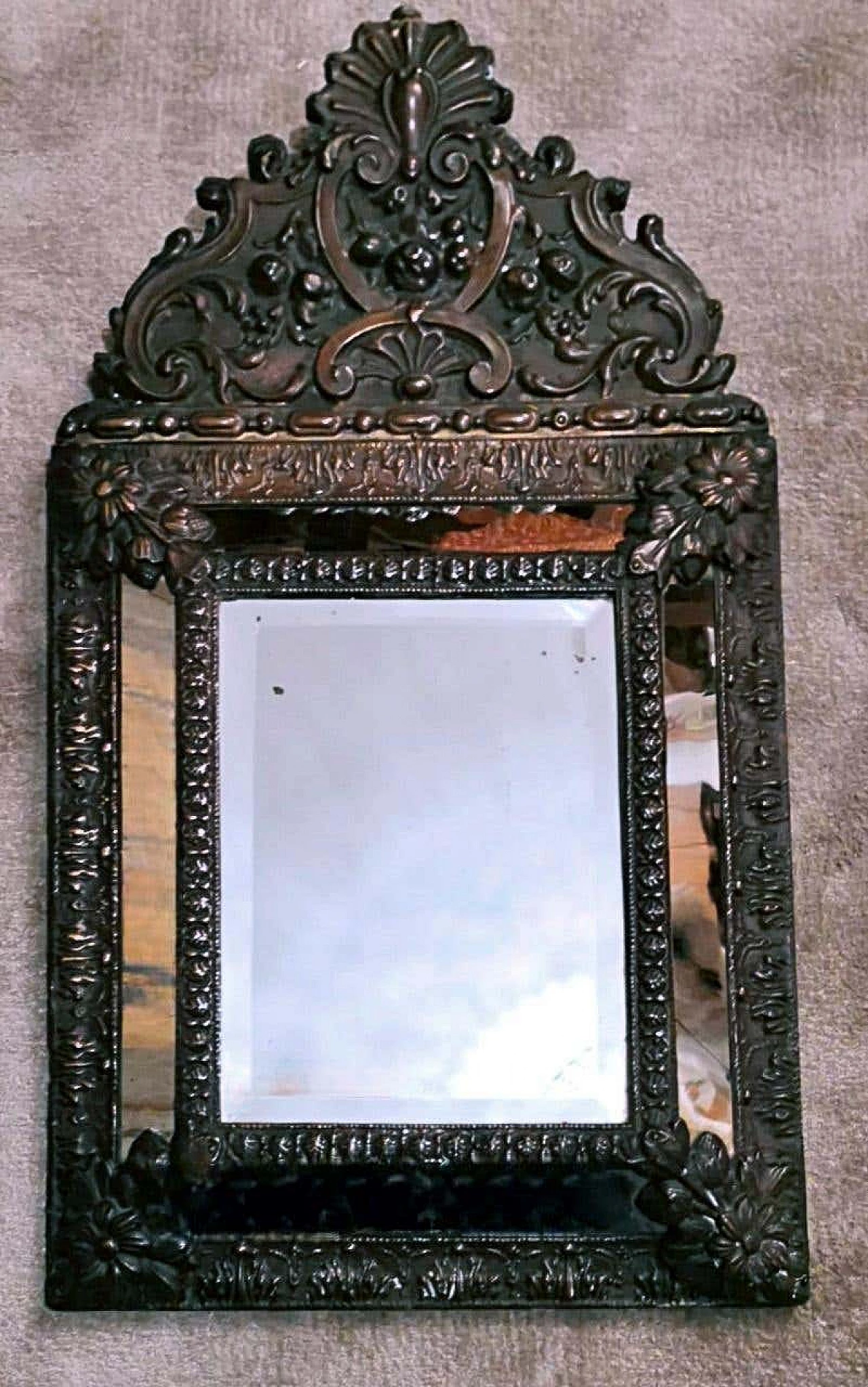
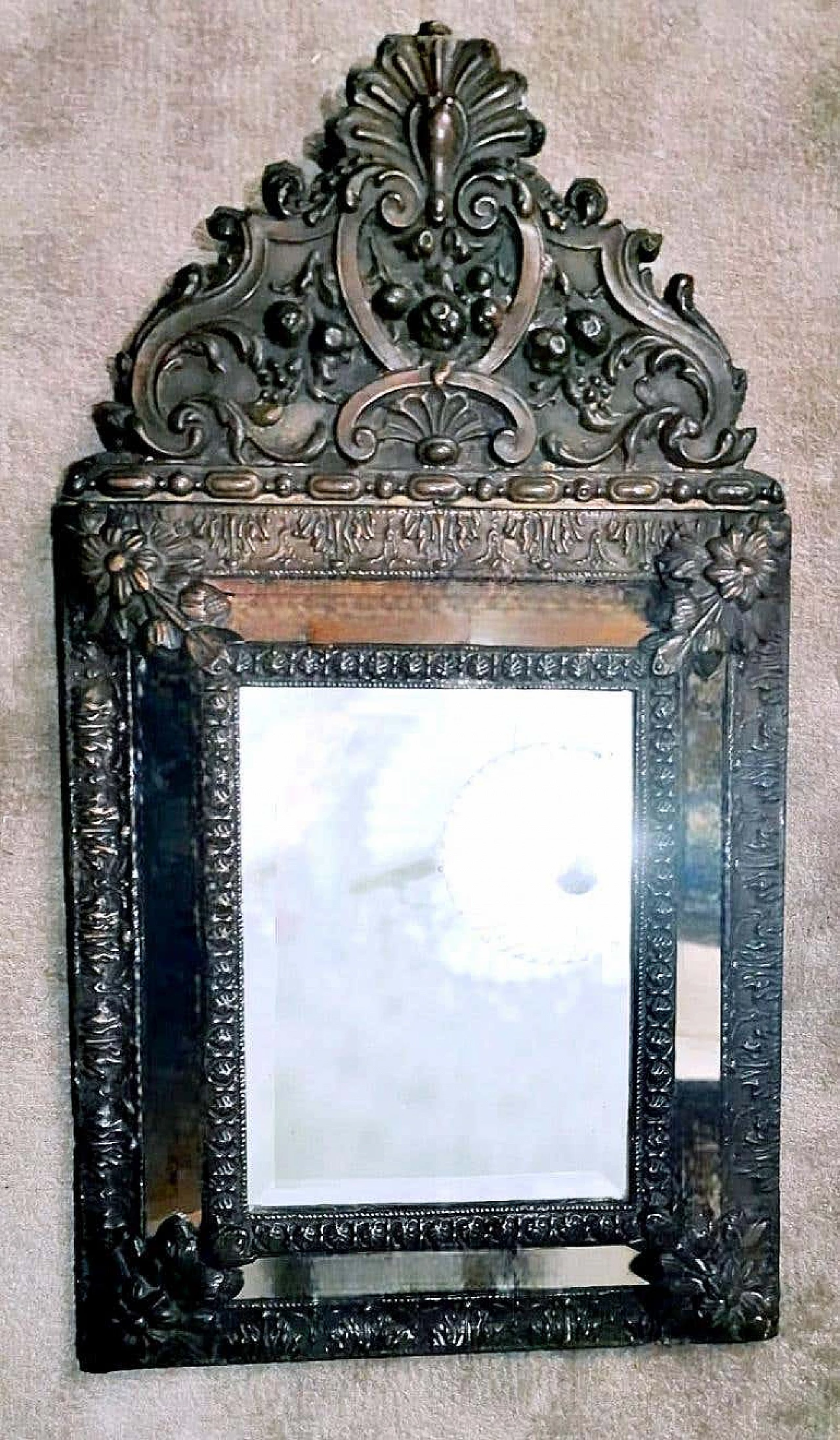
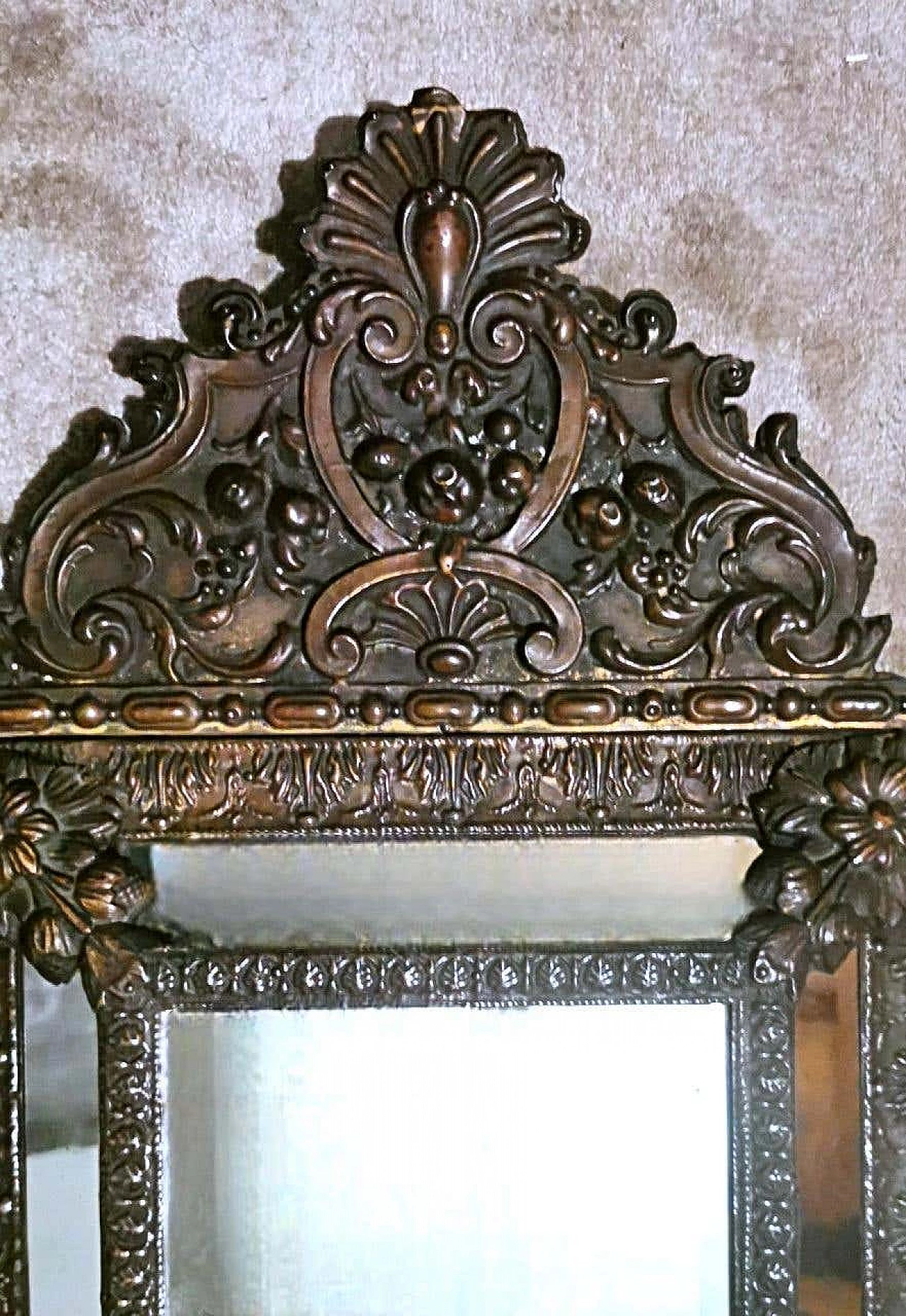
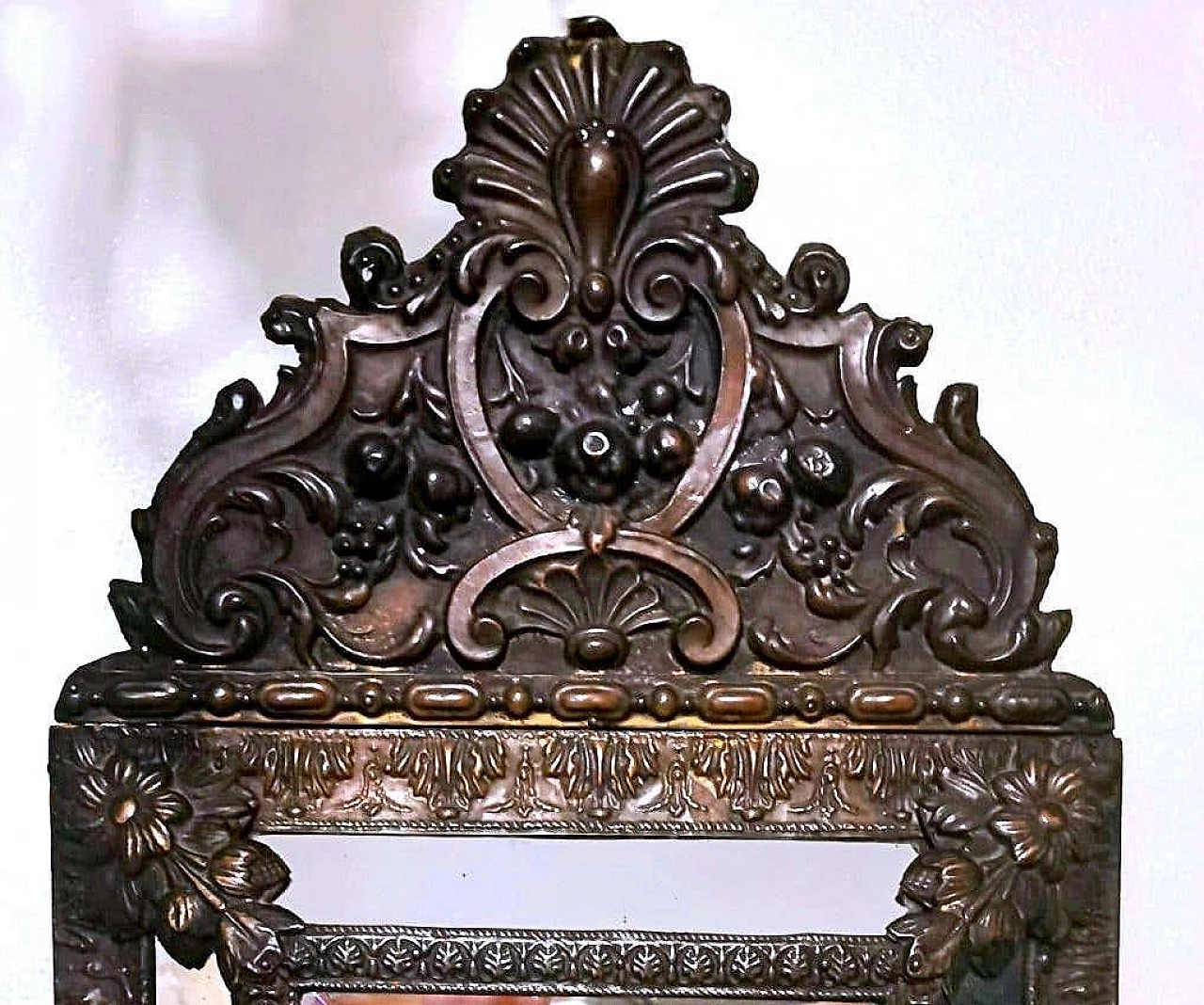
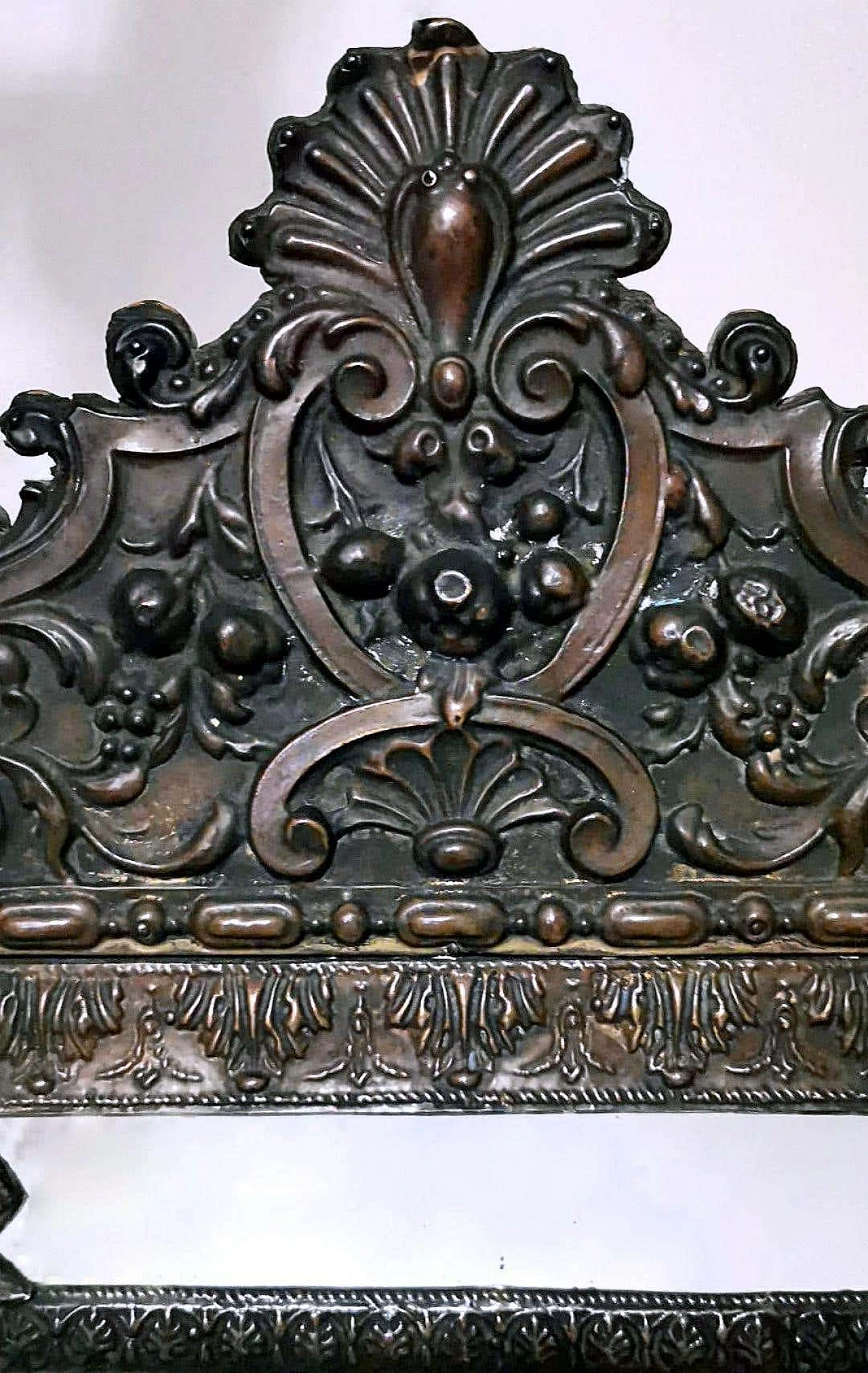
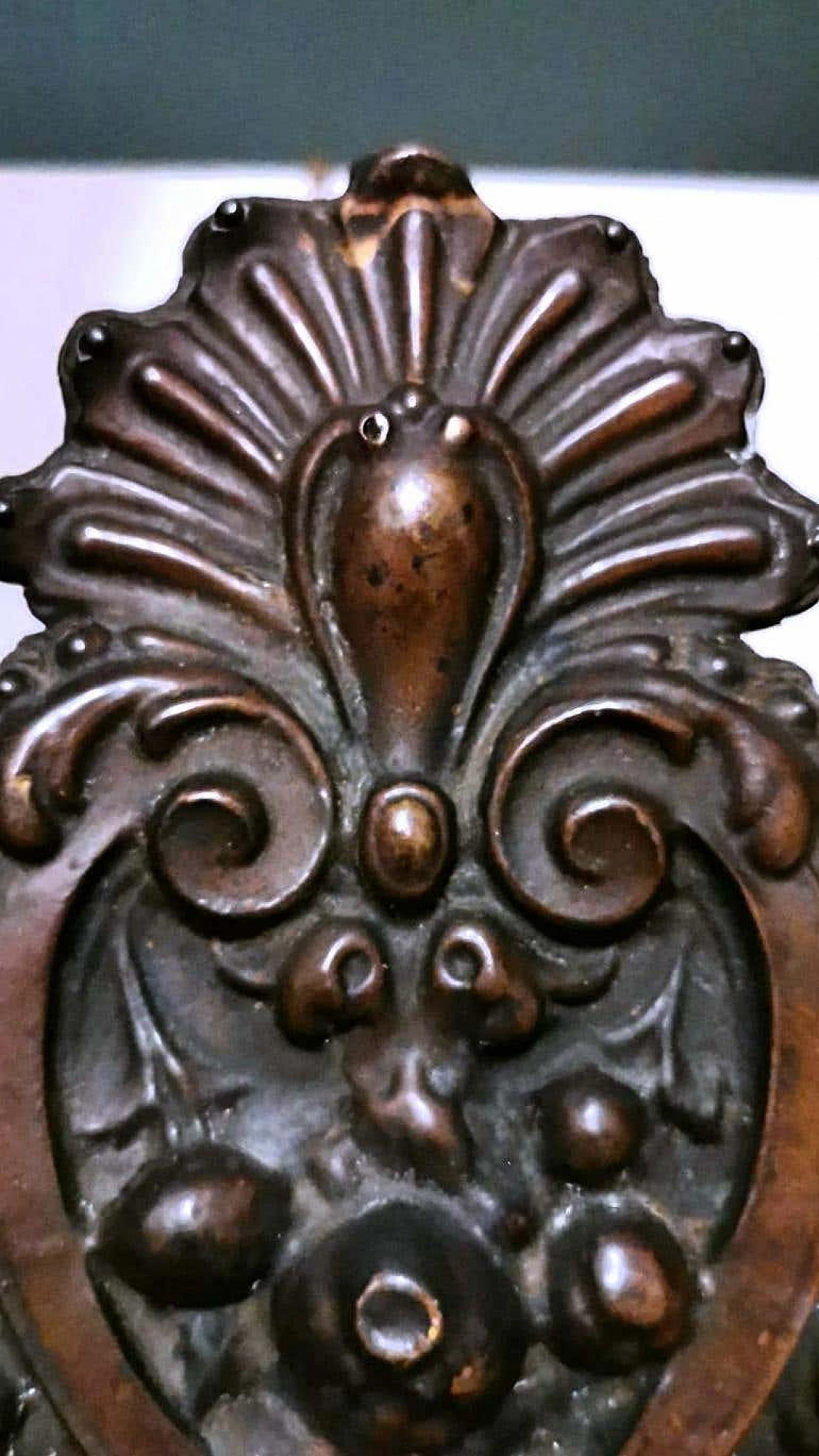
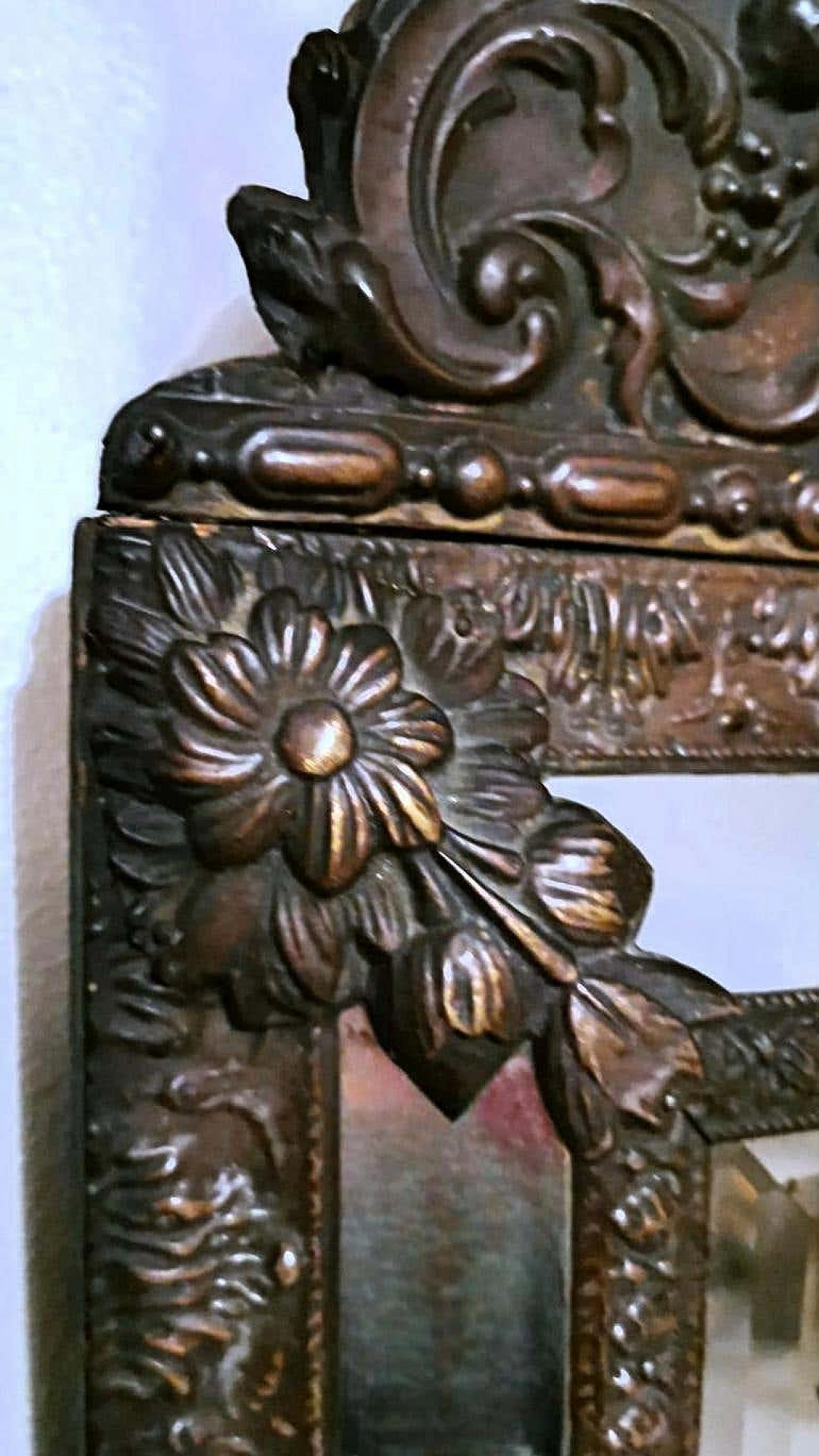
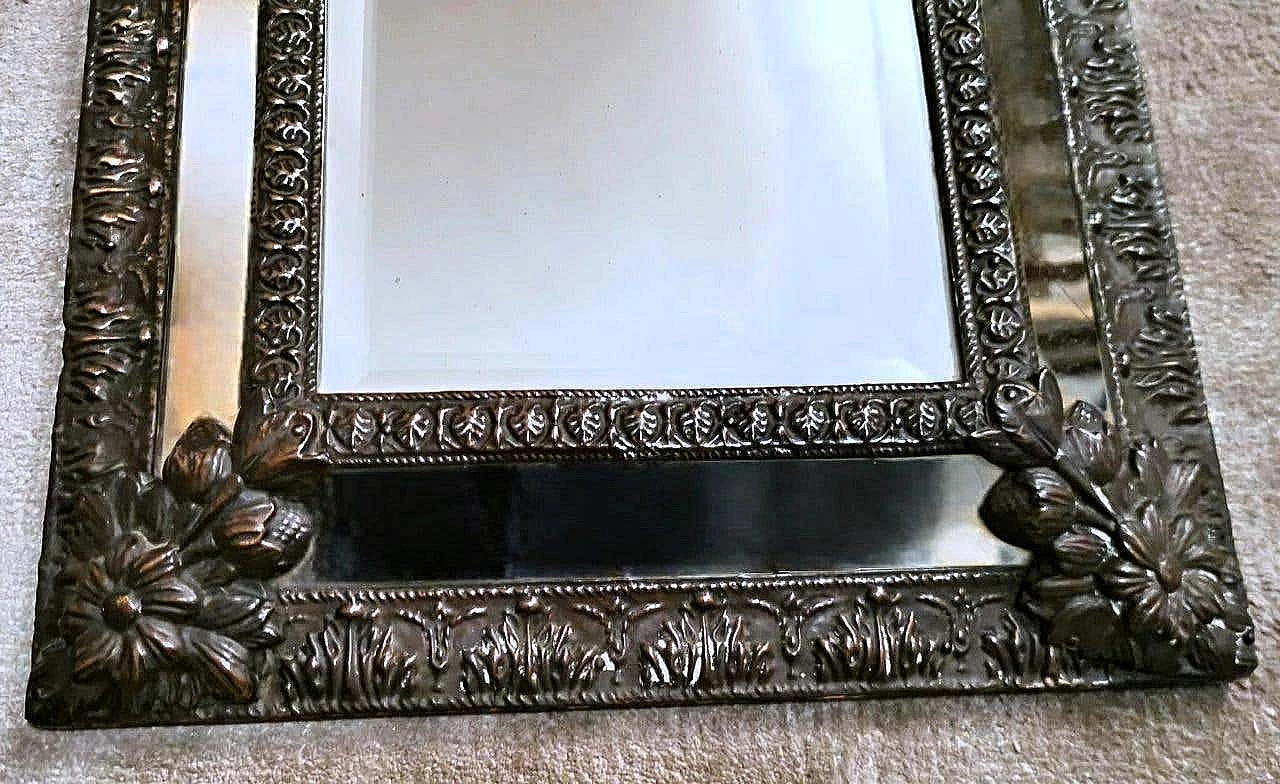
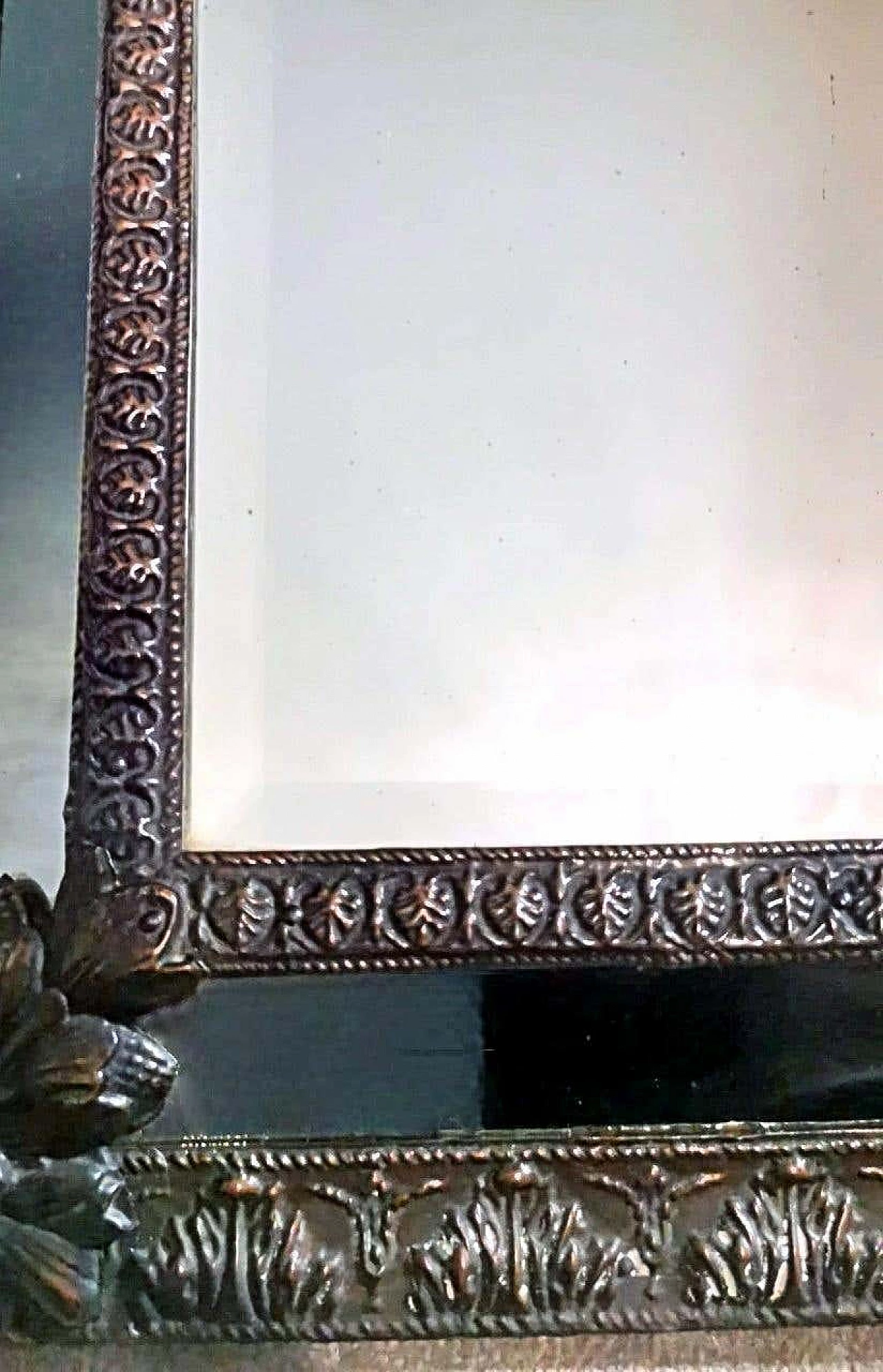
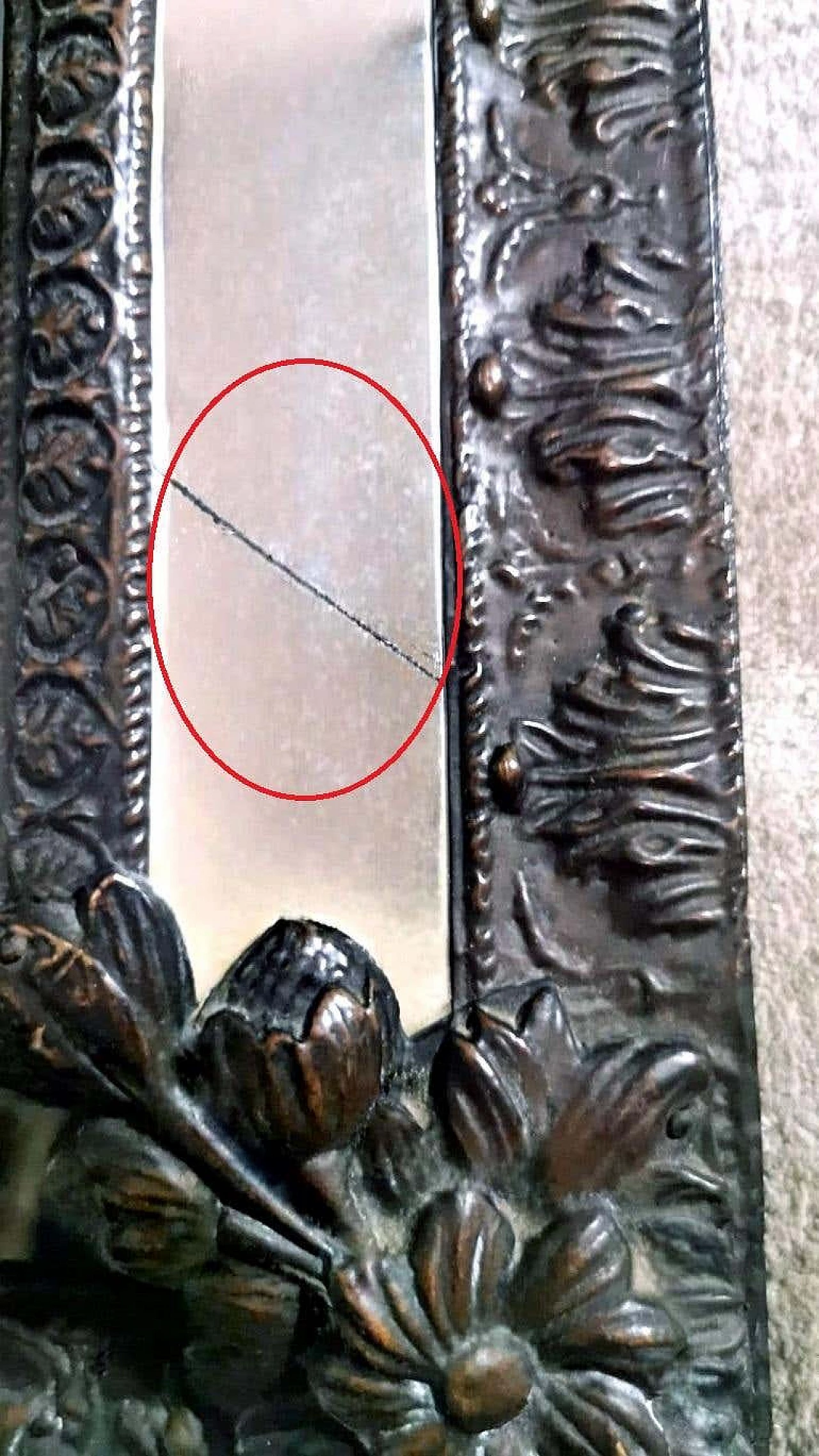
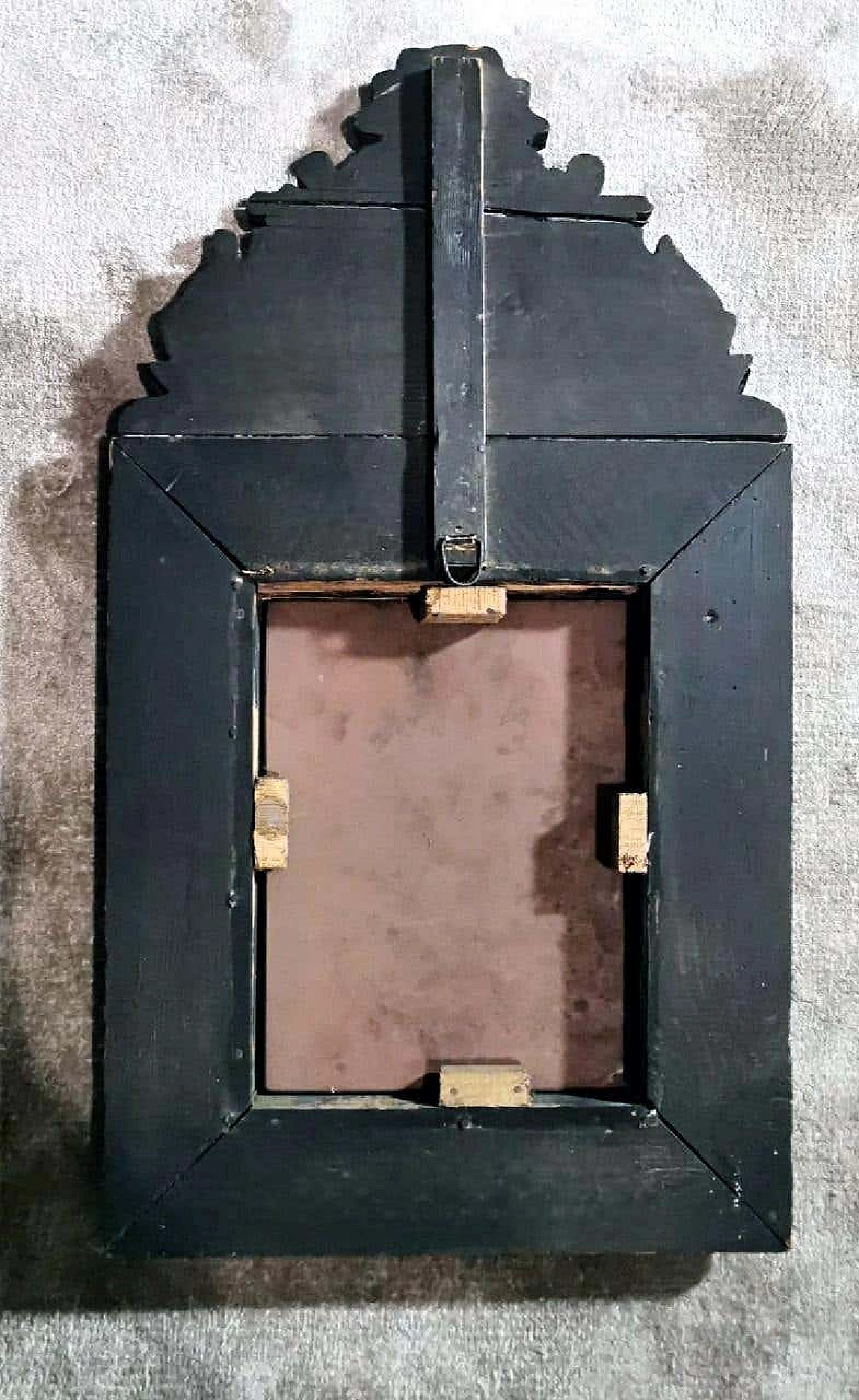
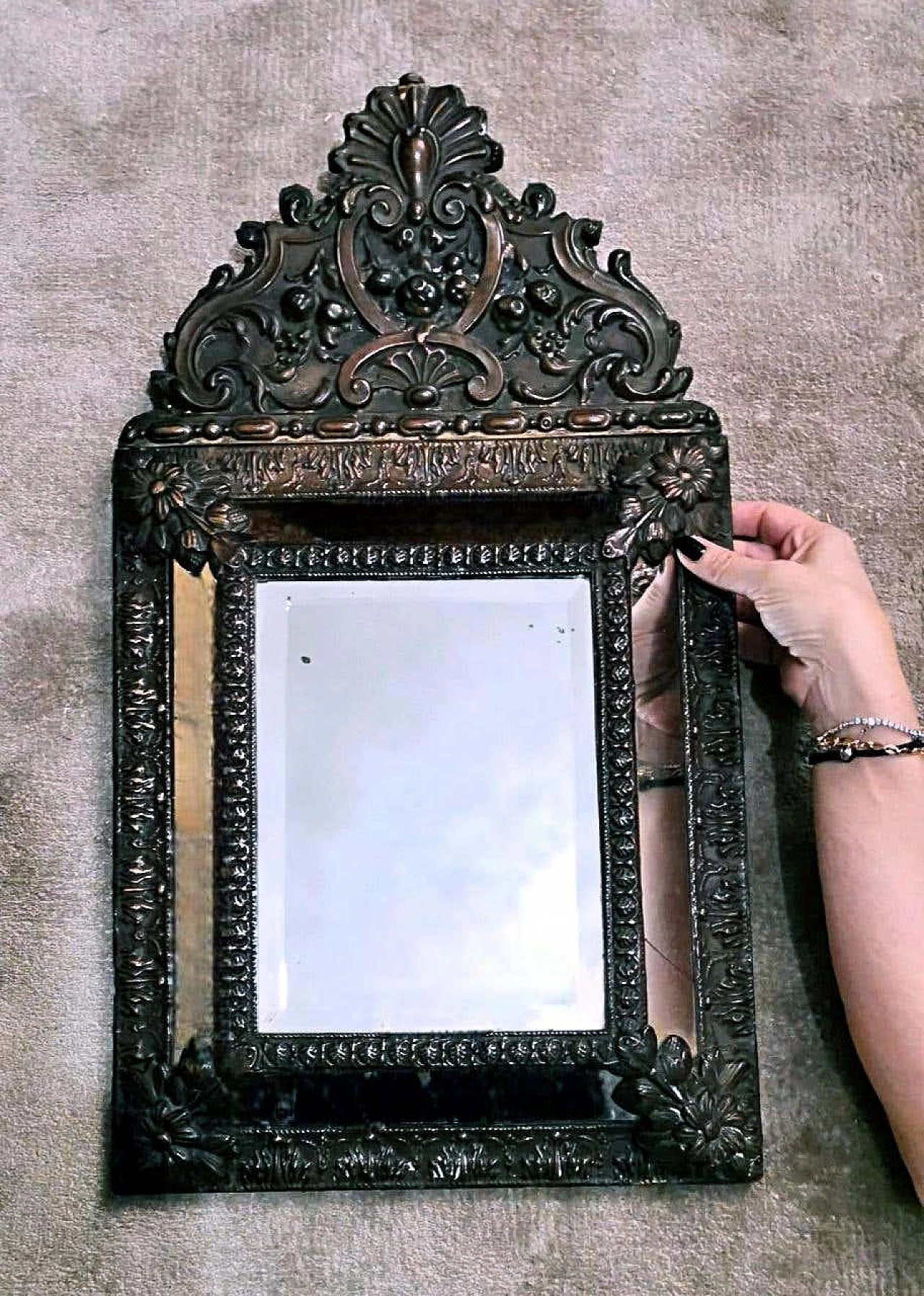
















An elegant and refined frame from the Napoleonic era with a bevelled central mirror whose reflective surface was obtained using the ancient mercury technique. An equal number of mirrors were placed along each side of the frame. The entire surface of the frame was made by working the brass using the 'repoussé' method (embossing: a technique for embossing drafts, figures or pre-determined designs on the surface of a sheet of metal using a special hammer on the back and alternating several special punches in the process, see photo). The embossing technique was known since antiquity and was used by Assyrians, Egyptians, Greeks, Romans and later in the Middle Ages. After this operation, the frame was immersed in a bath of acid burnisher, then mirrors were applied while the frame was fixed on a solid wooden back. All the elaborate decorations, meticulously handmade, are in the French Rococo style with flowers and rocailles. The working of mercury mirrors consisted of laying the metal over a series of layers of tin flattened on the glass; the mercury was then smoothed and polished with a special stone and buffed; the resulting mixture was called 'quicksilver'. This technique was perfected by Venetian glass masters (Master Dal Gallo 1507); the Serenissima placed the work under secrecy, but in time it left the city and spread to European nations, first and foremost France: the Mirror Gallery at Versailles Castle is decorated with hundreds of mercury mirrors! Our frame was made between 1855 and 1860 on the outskirts of Paris. In the 19th century, Paris was renowned for its workshops specialising in mercury mirrors. The mercury mirror technique, also known as 'Venetian mirror' or 'silvered mirror', was a widespread practice for the production of high quality mirrors. Parisian workshops were known for their mastery in applying mercury to the back of glass to create clear and sharp reflections. This technique required great skill and knowledge of the chemical processes involved. Among the most renowned workshops of the time was that of Jean-Baptiste Boulard, founded in 1826. Another famous laboratory was that of Étienne-Gaspard Robert, known as 'Robertson', who had founded a mercury mirror company in 1827. These workshops and many others like them in Paris attracted skilled craftsmen from different parts of Europe, creating a lively centre for the production of mercury mirrors and their frames that contributed to the development of the industry; our frame was born in this context. It is a highly decorative piece that can be placed in any room of the house; indeed, the Antique Mirror has the ability to transform a room, giving it character and creating interesting and engaging perspective illusions. The article is in good condition. The mirror's imperfections, small stains and veiled surface patina attest to its antiquity and authenticity. Width 33 cm, depth 5 cm and height 59 cm. For all our shipments we use special packaging materials (wooden crates, polystyrene, elegant and refined frame from the Napoleonic era with a bevelled central mirror whose reflective surface was obtained using the ancient mercury technique. An equal number of mirrors were placed along each side of the frame. The entire surface of the frame was made by working the brass using the 'repoussé' method (embossing: a technique for embossing drafts, figures or pre-determined designs on the surface of a sheet of metal using a special hammer on the back and alternating several special punches in the process, see photo). The embossing technique was known since antiquity and was used by Assyrians, Egyptians, Greeks, Romans and later in the Middle Ages. After this operation, the frame was immersed in a bath of acid burnisher, then mirrors were applied while the frame was fixed to a solid wooden back. All the elaborate decorations, meticulously handmade, are in the French Rococo style with flowers and rocailles. The working of mercury mirrors consisted of laying the metal over a series of layers of tin flattened on the glass; the mercury was then smoothed and polished with a special stone and buffed; the resulting mixture was called 'quicksilver'. This technique was perfected by Venetian master glassmakers (Maestro Dal Gallo 1507); the Serenissima placed the process under secrecy, but in time it left the city and spread to European nations, first and foremost France: the Mirror Gallery at Versailles Castle is decorated with hundreds of mercury mirrors! Our frame was made between 1855 and 1860 on the outskirts of Paris. In the 19th century, Paris was renowned for its workshops specialising in mercury mirrors. The mercury mirror technique, also known as 'Venetian mirror' or 'silvered mirror', was a widespread practice for the production of high-quality mirrors. Parisian workshops were known for their mastery in applying mercury to the back of glass to create clear and sharp reflections. This technique required great skill and knowledge of the chemical processes involved. Among the most renowned workshops of the time was that of Jean-Baptiste Boulard, founded in 1826. Another famous laboratory was that of Étienne-Gaspard Robert, known as 'Robertson', who had founded a mercury mirror company in 1827. These workshops and many others like them in Paris attracted skilled craftsmen from different parts of Europe, creating a lively centre for the production of mercury mirrors and related frames that contributed to the development of the industry; our frame was born in this context. It is a highly decorative piece that can be placed in any room of the house; indeed, the Antique Mirror has the ability to transform a room, giving it character and creating interesting and engaging perspective illusions. The item is in good condition. Mirror imperfections, small stains and a veiled surface patina attest to its antiquity and authenticity. Width 33 cm, depth 5 cm and height 59 cm. For all our shipments we use special packaging materials (wooden crates, polystyrene, etc.) to ensure maximum protection and safety of the objects.
ID: 4672-1692714913-70178
